Master Pool Alkalinity: Easy Steps to Clear Water
November 28th, 2024
November 28th, 2024
You step out into your backyard, the sun casting a warm glow over your oasis, only to discover that your pool, usually a sparkling retreat, seems less inviting today. A quick test reveals the culprit: the alkalinity levels have shot up, threatening the delicate balance of your aquatic paradise. High alkalinity not only affects the clarity of the water but can also lead to scaling and irritation for swimmers. It’s a common hiccup in pool maintenance, yet one that requires swift attention to ensure that the joy of care-free swimming remains uninterrupted.
When beginners first encounter this issue, it can seem overwhelming. Who knew that maintaining a pool could feel like managing a small science lab? Yet, with a bit of understanding, it becomes a manageable task. Over the years, I've grappled with this very issue, experimenting with various methods to restore balance without spending a fortune on professional services. My neighbor once tried to help by suggesting an old trick involving baking soda, only to discover it had the opposite effect! It turns out adjusting alkalinity demands precision and the right ingredients—specifically, the use of an acid like muriatic acid or sodium bisulfate, both readily available and effective.
In tackling high alkalinity, it's essential to act methodically. With the right approach, anyone can transform a murky pool back into a welcoming sanctuary, ready for lazy afternoons and cannonball competitions.
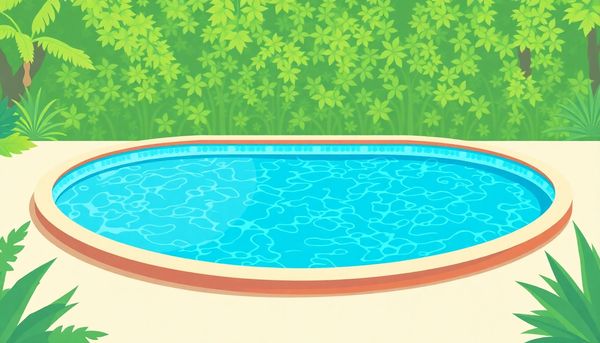
In the realm of pool maintenance, balancing alkalinity quickly can be as critical as it is challenging. Let’s say you just discovered your pool's alkalinity levels have surged beyond the ideal 100 to 150 parts per million (ppm). This not only threatens the delicate pH balance but also the overall ability of your pool to maintain a hygienic environment. Fortunately, there are swift measures to restore harmony in your aquatic sanctuary.
When faced with high alkalinity, reaching for muriatic acid or sodium bisulfate is often your best bet. These acids are specifically designed to correct imbalances, though each comes with its own set of precautions. Muriatic acid, akin to a more subdued version of hydrochloric acid, can aggressively lower alkalinity but demands careful handling. Always don protective gear, and ensure proper dilution to avoid mishaps. Sodium bisulfate, on the other hand, offers a safer alternative, although it does tend to lean towards the pricier side.
Reflecting on personal experiences, a friend once shared how they transformed their pool from a cloudy mess into a crystal-clear oasis simply by patiently adjusting the alkalinity over a few days, using these methods. This underscores the importance of not rushing the process. After adding the acid, allow the water to circulate and retest the levels after a day or two. Remember, patience is paramount; overzealous corrections can lead to fluctuations in pH and more headaches down the line. Share your success stories with fellow pool enthusiasts, and the journey to balance becomes a little less daunting.
Taming high alkalinity in your pool often feels like solving a chemistry puzzle. One effective method involves using acids, specifically muriatic acid or sodium bisulfate, to bring those levels back into balance. These acids work by neutralizing excess alkaline substances in the water, which in turn lowers both alkalinity and pH. This dual action is crucial since the two are closely linked—altering one often affects the other.
Muriatic acid, akin to a milder hydrochloric acid, is a powerful tool. It's vital to handle it with care, donning protective gear like gloves and goggles. Follow the manufacturer's instructions diligently, as some brands might require further dilution before adding it to the pool. As a friend who once underestimated the potency of muriatic acid can attest, a little patience goes a long way—the process might need repeating over several days to see significant results.
Sodium bisulfate, on the other hand, presents a less hazardous alternative, often marketed as pH down. It's easier to handle but can be somewhat pricier. This dry acid efficiently lowers alkalinity and pH, requiring you to store it in a dry place away from moisture. Remember to retest your pool water after treatment, ensuring the alkalinity returns to the desired range of 100 to 150 ppm. Balancing your pool’s chemistry is like finding harmony in a symphony; each element must be finely tuned to ensure the water remains clear and inviting.
Balancing the pH of your pool is much like perfecting a delicate recipe: too much of one ingredient can throw off the entire dish. In the world of pool maintenance, total alkalinity serves as this crucial ingredient, acting as a buffer to stabilize pH levels. If your alkalinity levels are too high, you might find yourself dealing with a host of issues like cloudy water, calcium deposits, or even irritated skin. Fortunately, with a couple of strategic moves, these problems can be swiftly addressed.
Think back to a time when you've used too much seasoning in a favorite dish. The solution often involves adding other elements to balance the flavors. In pool care, muriatic acid or sodium bisulfate acts in a similar capacity. These substances help lower total alkalinity, gently nudging your pool's chemistry back to its ideal state. Wearing protective gear, carefully add the acid to the pool, ideally in the deep end, while the pump is running to ensure even distribution.
While the process might seem daunting, regular testing can keep surprises at bay. Invest in a reliable test kit to monitor your water’s chemistry. By keeping a close eye on these levels, you’ll ensure a safe and pleasant swimming environment. Remember, a well-balanced pool not only protects equipment but also enhances the swimming experience for everyone. In no time, you'll master this balancing act, leaving you more time to enjoy the sun-kissed waters.
Every pool owner dreams of a sparkling oasis, free from chemical chaos. To keep high alkalinity from becoming a frequent guest at your poolside party, prevention is key. Begin with regular monitoring. Using test strips or a liquid test kit not only helps catch fluctuations early but also keeps your pool chemistry in check. Consider it like reading the morning news to stay informed—only here, you're keeping tabs on pH and alkalinity.
A smart approach involves managing the chemicals you regularly introduce to your pool. Opt for unstabilized chlorine to minimize cyanuric acid buildup, which can unwittingly elevate alkalinity. When choosing cleaning and sanitizing agents, selecting products with balanced pH levels can prevent unnecessary shifts in your water chemistry.
Don't overlook the benefit of routine maintenance like skimming and vacuuming. These activities reduce organic matter, which contributes to chemical imbalance. It's like tidying up your living room—you wouldn't leave clutter around knowing it could lead to bigger messes.
Lastly, be mindful of external factors. High bather loads and environmental debris can throw your pool’s balance off-kilter. Scheduling regular pool shock treatments, while ensuring you adjust and monitor subsequent chemical levels, can help mitigate these influences.
By integrating these practices, you’ll transform your pool care from a reactive chore to a proactive strategy, ensuring your blue haven remains a place of refreshing relaxation, not a battleground of chemical imbalances.
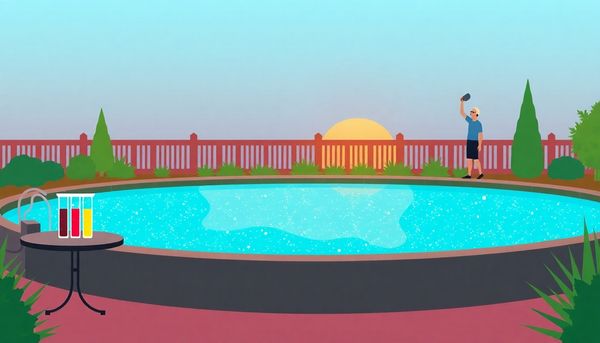
Navigating the world of pool chemistry can be like trying to crack a mysterious code. One important chapter in this book is understanding how to safely use acid solutions to lower your pool's alkalinity. The two main heroes in this quest are muriatic acid and sodium bisulfate. Both of these chemicals can be incredibly effective, but they must be handled with care and precision.
Muriatic acid, a diluted form of hydrochloric acid, is a powerful agent that can tackle high alkalinity levels. However, wielding this chemical requires more than just a casual approach. It's essential to don protective gear like gloves and a mask to guard against its corrosive nature and fumes. A personal anecdote here: always remember to add acid to water, not the other way around. Mixing them improperly can result in hazardous reactions.
On the other hand, sodium bisulfate, often referred to as dry acid, presents a slightly gentler alternative. Though it is safer to handle than muriatic acid, it still requires careful measurement and storage away from moisture. It's also worth noting this method can be pricier, but it offers peace of mind for those wary of handling stronger acids.
In either case, after using these acids, retesting your pool’s water is crucial. This ensures that both alkalinity and pH remain within the desired range, maintaining a sparkling, safe swimming environment.
There's a certain satisfaction in knowing your pool water is perfectly balanced, but getting there often requires more than a keen eye. Testing the water accurately is an art, not just a science. When tackling high alkalinity, the first step is ensuring your testing techniques are spot on. It’s like having a favorite recipe; precise measurements make all the difference.
First and foremost, choose reliable testing tools. Liquid test kits offer greater accuracy than strips, albeit requiring a bit more effort. These kits include reagents that react with the pool water, providing clear readings. Be sure to follow the instructions to the letter—no guesswork allowed. I once thought I could eyeball the amount of reagent needed, only to be left puzzled by the results.
Take samples from elbow-depth water, away from the skimmers and returns, for a representative reading. Consistent timing matters too; testing in the morning before the sun alters the chemistry yields the best results. If the numbers seem off, no harm in retesting. Better safe than sorry, especially when it involves pool chemistry.
Document your readings. A simple log helps in spotting trends over time, providing insights into how weather or usage patterns affect alkalinity. Armed with this data, adjusting your treatment method becomes more straightforward. With precise testing, you don't just lower alkalinity; you master your pool's unique chemistry, ensuring a sparkling, swimmer-friendly oasis.
Understanding the delicate balance of alkalinity and pH levels in your pool is like navigating a culinary recipe where too much of one spice can overpower the dish. In pools, total alkalinity acts as a stabilizer for pH levels. Think of it as the seasoning that ensures everything remains flavorful and balanced. If your pool’s alkalinity exceeds the ideal range of 100 to 150 parts per million (ppm), you'll likely encounter a spike in pH, leading to cloudy water or stubborn calcium deposits. This situation not only affects the water’s clarity but also the efficacy of chlorine.
Consider a summer barbecue where everything was set to be perfect, but a sudden gust scatters your setup. Similarly, excess alkalinity disrupts the harmony, making it tough for chlorine to sanitize effectively. One might notice the water turning murky or feel the pool surfaces becoming rough. Worse yet, the swimmers might begin to experience skin irritation or red eyes, much like the aftermath of opening your eyes under salted water.
Regular testing becomes essential in this scenario. Whether using test strips or a liquid test kit, keeping an eye on these chemical levels allows you to take timely corrective actions. This proactive approach ensures your pool remains inviting, the chlorine functions at its best, and the swimmers leave with nothing but pleasant memories. Through consistent monitoring and adjustment, you'll maintain that perfect poolside experience, akin to a well-executed meal without the unexpected zing.
Handling muriatic acid demands a thoughtful approach and a respect for its potent nature. Muriatic acid is a powerful tool in managing your pool’s alkalinity, but its strength can be a double-edged sword. When I first attempted to adjust my pool’s chemistry, I learned quickly that preparation is key. You can’t just pour it in and hope for the best. Instead, start by donning the right protective gear—gloves, goggles, and a mask are non-negotiable companions to shield you from the fumes and potential splashes.
Once geared up, ensure you’re working in a well-ventilated area. Carefully read the manufacturer's instructions and measure the acid precisely. It’s not just about pouring; it’s about precision. If you’re using a brand that requires further dilution, mix it with water cautiously—always add acid to water, never the other way around, to avoid a dangerous reaction. As you pour the acid into the pool, aim for the deepest part and maintain a safe distance to prevent inhaling any fumes.
Patience is crucial because balancing pool alkalinity is not an overnight task. After adding the acid, wait a full cycle of the filtration system and retest the water. If the alkalinity hasn’t reached the desired range, the process might need repeating. Each time, keep tabs on both alkalinity and pH levels, as they tend to move in tandem. Over time, you’ll find a rhythm that keeps your pool crystal clear and your swimmers safe.
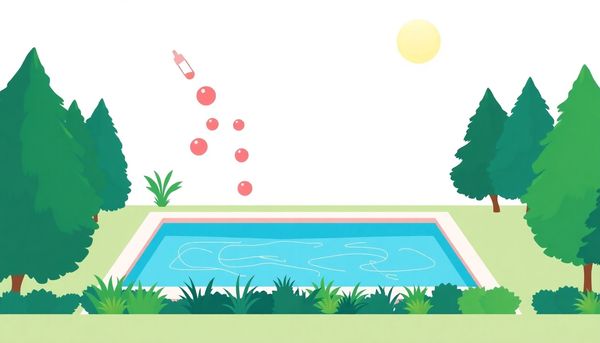
Chemistry in the pool can feel like deciphering a secret code, but tackling high alkalinity doesn’t need to be a mystery. When alkalinity creeps beyond desired levels, it often brings pesky side effects like cloudy water and scaling. These issues arise because the protective buffer that alkalinity provides to your pool’s pH starts working against you, making it difficult for chlorine to do its job effectively.
To reign in high alkalinity, many pool owners turn to the trusted allies of muriatic acid or sodium bisulfate. Muriatic acid, akin to a diluted hydrochloric acid, is a powerful tool. However, its strength comes with caution—it's corrosive, so safety gear is essential. On the flip side, sodium bisulfate is friendlier to handle but tends to be more costly. Both options require careful measurement and mixing, with the ultimate goal of nudging alkalinity back into the sweet spot of 100 to 150 ppm.
While working with acids, remember that patience is key; changes might not be immediate. After introducing the acid, give it a few days to work its magic, and don’t shy away from repeating the process if needed. Retesting your pool water ensures that adjustments don't tip the balance too far, maintaining harmony between alkalinity and pH. In this way, you keep not only your pool clear and inviting but also all those afternoon swims blissfully refreshing.
Envision a sunny afternoon by the pool, where everything seems perfect until you realize the water chemistry is off. High alkalinity might be the culprit, making the water cloudy and reducing the effectiveness of your chlorine. When it comes to tackling this issue, acid-based solutions are your best ally. Two popular choices stand out: muriatic acid and sodium bisulfate.
Muriatic acid is potent and effective but requires careful handling. Imagine it as a concentrated form of hydrochloric acid, which works wonders in lowering both alkalinity and pH simultaneously. Safety gear is non-negotiable. Gloves, goggles, and a mask will protect you from its corrosive nature. Follow the manufacturer's guidelines, and you might need to dilute it further before introducing it to your pool. The process isn't instant—patience is key. It might take several rounds to see your alkalinity levels return to the desired range.
On the other hand, sodium bisulfate, often marketed as a pH reducer, offers a safer alternative with its granular form. It's less intimidating and simpler to store, but it comes with a slightly higher price tag. This method also lowers both alkalinity and pH, so post-treatment testing is essential to ensure the levels are back on track.
In both cases, the balance between alkalinity and pH is delicate. Once the acid has done its job, consider using an aerator to gently raise the pH without impacting alkalinity. This subtle dance of chemicals ensures your pool remains a welcoming oasis, free of scaling and irritation.
Swimming pools can feel like an oasis on a hot summer day, but maintaining the delicate balance of chemicals in your pool water is essential for a truly refreshing experience. A well-balanced pool isn’t just about the right temperature; it's about achieving the perfect harmony between alkalinity and pH to keep your water safe and sparkling.
Every pool owner knows the frustration of cloudy water or irritating skin after a swim. Often, the culprit is high alkalinity, which prevents chlorine from doing its job effectively. When alkalinity is too high, it buffers the pH to such an extent that it can lead to scaling and cloudy water. To tackle this, it's crucial to understand that alkalinity and pH are intertwined. Lowering one often affects the other, which is why careful monitoring is vital.
Regular testing with reliable test strips or a liquid test kit should become routine. This provides a clear picture of your pool’s chemistry, helping you make informed decisions. For instance, adding muriatic acid or sodium bisulfate can help reduce alkalinity, but each comes with its precautions. Muriatic acid requires careful handling and proper protective gear, while sodium bisulfate, although safer, can be a more costly option.
What’s fascinating is how small tweaks and maintenance routines can make a huge difference. Keeping an eye on factors like bather load and chlorine levels can prevent surprises. This proactive approach ensures your pool remains a pristine retreat, inviting and enjoyable for every splash.
Maintaining the perfect pH balance in your pool is a bit like orchestrating a fine symphony; every element plays a crucial role. When tackling high alkalinity, one must pay attention to pH levels. These two parameters are deeply intertwined, as altering the alkalinity often nudges the pH in tandem. Thus, after addressing alkalinity issues with muriatic acid or sodium bisulfate, it's essential to regularly check your pH.
Consider this: a friend of mine once focused solely on reducing alkalinity, overlooking the resulting dip in pH. His pool soon became a cauldron of cloudy water, much to his dismay. Testing kits, whether strips or liquid, become your best allies. They provide a snapshot of your pool's current state, allowing you to make informed decisions.
After applying a pH reducer, allow the water to circulate for a few hours before testing again. This pause ensures accurate readings and prevents hasty adjustments that could lead to further imbalance. If the pH reads too low, a simple solution is aeration. By increasing water movement, the pH can naturally rise without affecting alkalinity. Remember, patience is key; drastic changes can stress your pool's ecosystem.
By carefully monitoring and adjusting, you ensure your pool remains a welcoming oasis, free from irritating water or persistent scaling. Keeping an eye on pH not only protects your investment but also provides a refreshing escape for all who dive in.

Balancing the pH in your pool is akin to mastering the art of cooking; too much or too little of any ingredient can spoil the entire dish. When it comes to maintaining pool chemistry, stabilizing pH is crucial, especially when alkalinity levels are off the charts. You might think of alkalinity as the backbone of your pool’s chemistry, supporting the pH to maintain its health and clarity. High alkalinity can push your pH levels to soar, resulting in cloudy water and inefficient chlorine.
To stabilize your pool’s pH after lowering alkalinity, careful adjustment is key. Muriatic acid or sodium bisulfate can be your go-to ingredients in this chemical recipe. These acids not only lower alkalinity but also have a significant impact on pH, requiring you to keep a vigilant eye on the levels after treatment. Once you’ve added the acid, give it time—let the pool pumps circulate the water, ensuring that the treatment spreads evenly.
After the initial treatment, test your water frequently. When I first started adjusting my pool, I learned the hard way that rushing the process led to imbalances. Slow and steady corrections allowed the pH to stabilize more effectively. If the pH drops too low, consider gentle aeration to lift it back up without altering alkalinity. This delicate dance between alkalinity and pH is essential for a sparkling, inviting pool that’s ready for summer splashes.
Navigating the world of pool chemicals can sometimes feel like deciphering a foreign language. Yet, when faced with the task of lowering high alkalinity, your choices boil down to two main contenders: muriatic acid and sodium bisulfate. Each has its distinct characteristics and advantages, and knowing which to pick can ease the process significantly.
Muriatic acid stands out for its effectiveness. It’s a powerful solution, almost akin to a superhero with the ability to swiftly bring down high alkalinity levels. However, caution is critical here. Handling it requires protective gear, including gloves and goggles, as its corrosive nature can pose risks to both skin and surfaces. There’s also the matter of safety in storage, ensuring it’s kept away from curious hands and in a well-ventilated space.
On the flip side, sodium bisulfate offers a more user-friendly approach. Often sold as "pH reducer," this dry acid is gentler, making it a preferable option for those wary of handling stronger chemicals. Though it comes at a higher price point, its ease of use and reduced safety concerns often justify the cost. Plus, it doesn’t require the same level of meticulous dilution as muriatic acid, simplifying the application process.
Whichever chemical you choose, remember that patience and precision are key. Measure accurately and follow instructions diligently to ensure your pool returns to its ideal balance, keeping it inviting and safe for all swimmers.
Keeping a pool's chemistry in balance is much like nurturing a delicate eco-system. To ensure your pool’s alkalinity remains within the ideal range, regular monitoring and testing are crucial. Often overlooked, routine checks can save you from the hassle of correcting chemical imbalances later. Start with a reliable test kit—whether strips or liquid—to gauge not just alkalinity, but also pH and chlorine levels. It's worth marking a weekly spot on your calendar or setting reminders; consistency is key.
Once you've set this habit, you might notice patterns forming, such as spikes after heavy rain or a pool party. Adjusting for these events can prevent issues before they even arise. For instance, I once discovered that a busy weekend resulted in elevated alkalinity due to all the sunscreen and sweat. A quick test followed by a minor adjustment with a pH reducer brought everything back to normal.
Keep a record of your findings, noting the conditions surrounding any fluctuations. This log becomes your personal pool chemistry diary, offering insights that no generic guide can provide. This proactive approach not only keeps your water sparkling but extends the life of your pool equipment. By committing to regular monitoring and testing, you transform a daunting task into a manageable routine, all while ensuring a safe and enjoyable swimming environment.
Handling chemicals around the pool might not be everyone’s idea of a fun afternoon, but ensuring safety when dealing with substances like muriatic acid or sodium bisulfate is non-negotiable. Without the right precautions, these powerful agents could easily transform a simple task into a hazardous situation. As a pool owner, one of my first experiences adjusting alkalinity taught me the importance of protective gear. I remember that slight sting in my eyes from the muriatic acid fumes because I had underestimated the need for goggles. Now, gloves, goggles, and a mask are my go-to trio whenever I approach pool chemistry tasks.
Understanding the manufacturer's instructions is crucial. Each brand might come with its own set of guidelines on how to dilute and apply these chemicals properly. For instance, some brands of muriatic acid require further dilution before use, and skipping that step could lead to overly aggressive treatment. This not only protects the equipment from corrosion but also ensures the safety of anyone nearby. Storing these chemicals in a dry, secure place away from children and pets is another essential step in maintaining a safe pool environment.
Incorporating safety measures into your pool maintenance routine can prevent accidents and keep your poolside activities enjoyable. By prioritizing protection and precision, you can manage your pool chemistry effectively while safeguarding your health.
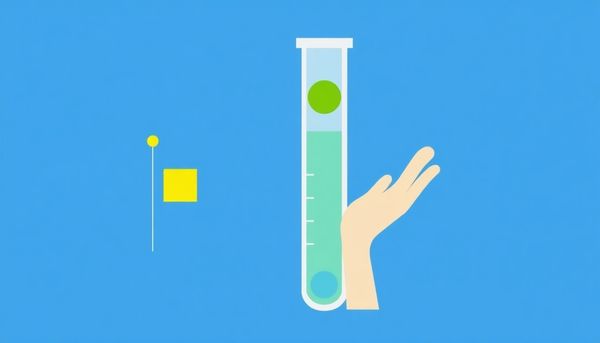
Standing beside your pool, you might not think much about the microscopic battles occurring within the water. Yet, when alkalinity tilts too high, it stirs up quite the chemical commotion. One of the silent sufferers in this scenario is chlorine, your pool's valiant defender against bacteria and algae. To ensure chlorine isn't fighting a losing battle, keeping the alkalinity in check is paramount.
Chlorine's disinfecting prowess falters in overly alkaline waters. Essentially, if the alkalinity in your pool is high, it acts like a barricade, minimizing chlorine's effectiveness. This becomes evident when the water turns hazy or swimmers complain of itchy skin. That's a clear signal to resolve the imbalance for optimal sanitization. Here, regular water testing plays a crucial role. By keeping an eye on both alkalinity and pH levels, you ensure that chlorine can perform its duties without hindrance.
Speaking from experience, neglecting these checks can lead to unnecessary complications. During one summer, I skipped my usual testing routine, only to find my pool resembling a milky lagoon. Balancing the alkalinity and tweaking the pH brought clarity back, but it was a lesson learned the hard way. So, to avoid teetering on the brink of imbalance, equip yourself with test strips or a reliable liquid test kit. With these tools, maintaining pristine water and effective chlorination becomes second nature.
Stepping into the realm of pool maintenance uncovers the delicate dance between alkalinity and effective chlorination. Alkalinity serves as the steadfast guardian of pH levels, keeping them from veering wildly out of control. Imagine it as a seasoned tightrope walker, maintaining balance amidst the ever-changing conditions of pool water chemistry. Herein lies its importance: if the alkalinity tips too far into the high range, not only is the pH disturbed, but your chlorine’s effectiveness is also compromised, rendering it less capable of keeping your pool pristine.
Consider the scenario of a high bather load or the use of stabilized chlorine, both of which can inadvertently elevate alkalinity. These elements introduce additional buffers into the pool water, shifting the balance and making it harder for chlorine to perform its essential role. This can lead to murky water and surfaces keen to gather calcium deposits. It's a frustrating scene for anyone who cherishes their backyard oasis.
Hence, maintaining alkalinity within the ideal range of 100 to 150 parts per million (ppm) is crucial. This balance acts like a well-tuned orchestra, where each element of pool chemistry plays its part in harmony. Regular testing and adjustments, using methods such as adding muriatic acid or sodium bisulfate, become your instruments in this symphony. And when these measures are taken, your chlorine can triumphantly resume its duty, ensuring bright, clear water, ready for swimmers to enjoy without worry.
Handling pool chemicals, especially acids, requires a careful approach to ensure safety and effectiveness. Begin with protective gear: goggles, gloves, and a mask should top your list. These simple items aren’t just for show — they safeguard against splashes and fumes that can irritate skin and eyes. Once you're geared up, find a well-ventilated area. Muriatic acid, commonly used to adjust pool alkalinity, can release vapors that are best handled outdoors or near open windows.
Next, take a moment to read the product label. Each brand might have specific instructions or dilution requirements, and knowing these details helps avoid mishaps. For instance, some muriatic acid brands require further dilution with water before being added to the pool. Always remember the golden rule: never pour water into acid; instead, add acid to water to prevent any violent reactions.
On the application day, keep pets and children away from the pool area. Slowly pour the acid near the pool’s return jets while the pump is running. This ensures it disperses evenly, safeguarding the pool lining from any concentrated spots that could cause damage. Afterward, give it time. Refrain from jumping into the pool immediately; wait at least four hours and retest the water to confirm levels are within the desired range.
Finally, always store pool chemicals, particularly acids, in a cool, dry place out of reach of children. This preventative measure not only ensures safety but also maintains the integrity of the chemicals for future use. By following these steps, you ensure a safer environment while effectively managing your pool's alkalinity.
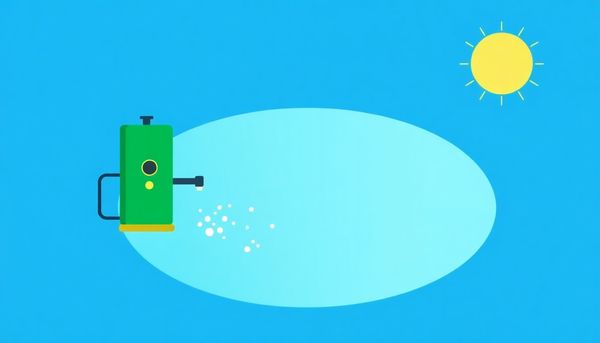
This article provided insights into maintaining your pool. Start your pool care journey today!
Want to become a pool maintenance expert? Our free Pool School course covers everything you need to know about pool care. From basic maintenance to advanced troubleshooting, you'll learn how to:
Join over 10,000 pool owners who have already transformed their pool care routine. Get started with our free Pool School course today!